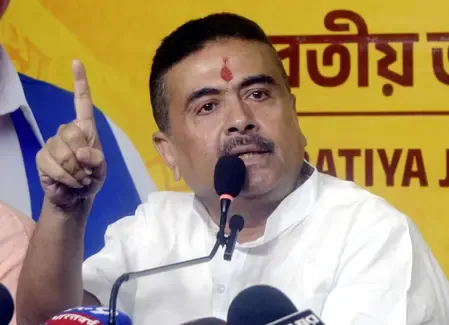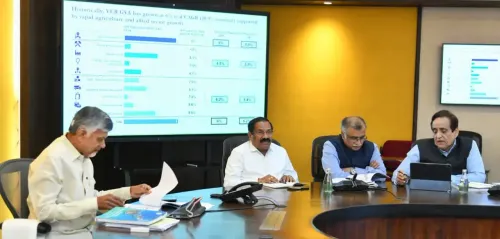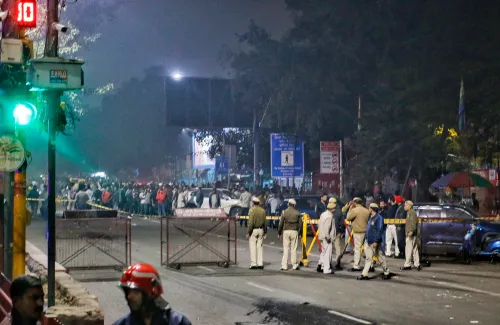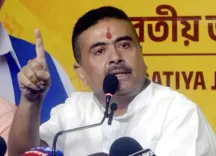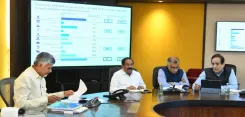India Achieves Top Rank in Global Textile Exports with 4% Share: Minister
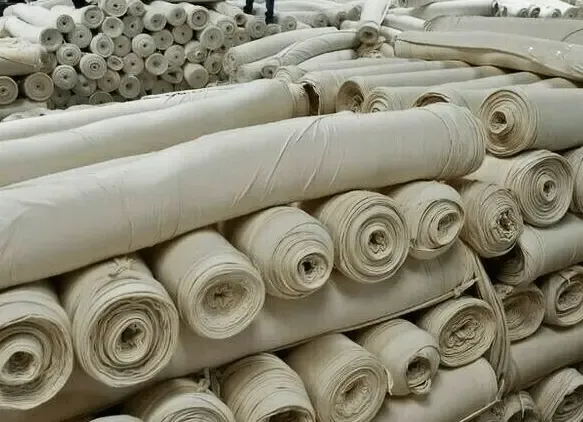
Synopsis
Key Takeaways
- India's textile export share is approximately 4%.
- Exports of textiles and apparel grew by 7% from April to December 2024.
- Major markets include the US, EU, and UK.
- Government initiatives aim to bolster textile infrastructure.
- India has signed 14 FTAs to enhance export potential.
New Delhi, March 21 (NationPress) India stands as one of the leading textile exporting nations globally, holding a significant share of about 4 percent in worldwide textiles and apparel exports, as revealed in the Parliament on Friday.
The export of Textiles and Apparel, including Handicrafts, saw a growth of 7 percent during April to December 2024 in comparison to the same timeframe last year, with the US, EU, and UK contributing to 53 percent of total exports for FY 2023-24, according to the Minister of State for Textiles, Pabitra Margherita, in a written response in the Lok Sabha.
The government is rolling out numerous initiatives to bolster Indian textiles. Key projects include the PM Mega Integrated Textile Regions and Apparel (PM MITRA) Parks Scheme aimed at developing a modern, integrated, world-class textile infrastructure; the Production Linked Incentive (PLI) Scheme focusing on MMF Fabric, MMF Apparel, and Technical Textiles to enhance large-scale manufacturing and competitiveness; and the National Technical Textiles Mission which emphasizes Research, Innovation, Development, Promotion, and Market Development.
The Silk Samagra-2 initiative aims for the comprehensive development of the sericulture value chain, while the National Handloom Development Programme provides comprehensive support for the handloom sector to promote exports.
Additionally, the Ministry of Textiles is executing the National Handicrafts Development Programme and the Comprehensive Handicrafts Cluster Development Scheme to further advance handicrafts, as mentioned by the minister.
The Indian textiles sector is one of the largest globally, boasting a vast raw material base of natural fibers like cotton, silk, wool, and jute, along with manmade fibers and a strong manufacturing capacity across the entire value chain from fiber to fabric to garments.
To guarantee a steady supply of cotton within the country and to maintain farmer interest in cotton farming, the Indian government announces a Minimum Support Price (MSP) for cotton annually. This mechanism ensures farmers receive a fair price for their produce should market rates dip below the MSP, thereby ensuring the availability of cotton at competitive prices.
The minister also highlighted that the customs duty on Extra-Long Staple (ELS) Cotton has been eliminated as of February 20, 2024. Under the India-Australia ECTA, 51,000 tonnes of duty-free ELS Cotton can be imported.
To bolster export potential, India has entered into 14 Free Trade Agreements (FTAs), including recent accords with the UAE, Australia, and TEPA with EFTA nations such as Switzerland, Iceland, Norway, and Liechtenstein; along with six Preferential Trade Agreements (PTAs) with various trading partners, the minister added.
The government is also implementing the Rebate of State and Central Taxes and Levies (RoSCTL) scheme for apparel to enhance competitiveness by adopting a zero-rated export principle.
Additionally, textile products not included in the RoSCTL scheme are part of the Remissions of Duties and Taxes on Exported Products (RoDTEP) along with other items. Furthermore, the government offers financial assistance to various Export Promotion Councils and Trade Bodies through the Market Access Initiative Scheme, aimed at organizing and participating in trade fairs, exhibitions, and buyer-seller meetings at both national and international levels to promote exports.

